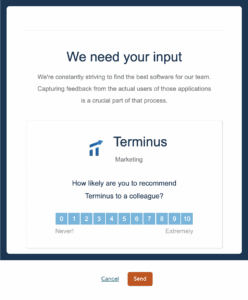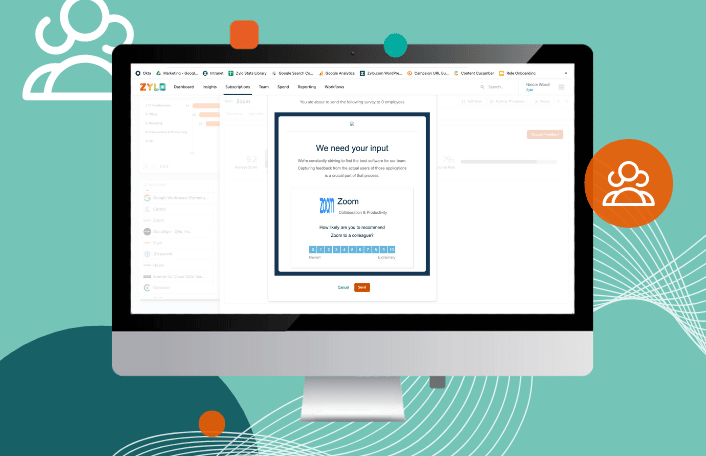Table of Contents
There are a lot of factors that go into your SaaS renewal decisions. These include whether an application is business-critical, whether usage and adoption are low, or whether duplicative applications are hiding in your tech stack. However, what often goes overlooked is employee sentiment. Are your employees happy with the tools they work with?
Low adoption from unpopular applications leads to practically throwing away money on unused licenses.
Measuring application sentiment in your organization allows you to gather user feedback, measure satisfaction, and ultimately make informed decisions that’ll boost employee productivity while optimizing your tech stack.
And that’s exactly what we’re going to look at today.
What Understanding Employee Sentiment Means for Business Outcomes
Employee sentiment is more than ensuring that your employees have tools they’re happy with. Although that certainly is part of it, sentiment also directly relates to meaningful business outcomes that promote the long-term success of your organization.
Monitoring and understanding how your employees use and feel about an application allows you to prioritize your optimization opportunities. By layering employee sentiment with utilization data from a SaaS management platform, you can maximize your investment and the applications’ value to your business. Organizations are then able to rightsize, rationalize, and renew their SaaS licenses with confidence.
What’s more, this process allows organizations to reduce their application footprint through rationalization. This consolidation in the tech stack results in better pricing and lower overall SaaS spend. It also improves the operational side of renewal management. Fewer apps means fewer renewals, as well as better coverage and preparation of those renewals by your procurement team.
In addition, we’ve found that this tech stack optimization results in better team collaboration and overall productivity. After all, it’s more effective to work from a few project management tools than 15.
Having the tools they know and love is important to many employees. In fact, research has found that almost 90% of employees would take a pay cut to use the tools they prefer. What’s more, understanding sentiment prevents poor software choices that can even lead to employee turnover. A report from G2 found that more than half of respondents (52%) reported feeling dissatisfied in their roles specifically from mismatched software. 24% even reported considering looking for a new job for this same reason.
As such, we see the importance of monitoring and measuring sentiment for business health. Plus, it will give your employees a much-needed voice in deciding the SaaS tools they use for their day-to-day roles.
How to Measure Employee Sentiment
When measuring sentiment, it’s important to gather input early and often. This means understanding the daily lives of employees. How does your tech stack improve their workplace experience? Is it a hindrance? To find this information, you’ll need the right tools and have the right conversations.
Have the Right Tools
 It’s important to have a 360-degree view of your SaaS spend, usage, and user feedback – sentiment being a key piece of the puzzle. Zylo’s Employee Sentiment is a tool that enables you to garner feedback from your employees with the click of a button. This creates a layer of transparency that enables IT and procurement to make powerful proactive recommendations and decisions to optimize the tech stack based on meaningful sentiment data.
It’s important to have a 360-degree view of your SaaS spend, usage, and user feedback – sentiment being a key piece of the puzzle. Zylo’s Employee Sentiment is a tool that enables you to garner feedback from your employees with the click of a button. This creates a layer of transparency that enables IT and procurement to make powerful proactive recommendations and decisions to optimize the tech stack based on meaningful sentiment data.
With Employee Sentiment you can:
- Measure Employee Sentiment. Zylo uses a 10-point NPS recommendation scoring system to track user sentiment to help determine if a new tool is needed or if the current tool is working for your employees.
- Recognize Optimization Opportunities. Through the power of sentiment data, you can identify possible optimization opportunities such as eliminating low-adoption apps.
- Monitor Sentiment Across Categories. Zylo enables users to monitor sentiment across software categories to proactively address both negative and trends to create a tech stack optimized for utility and employee sentiment.
With the right tools to measure sentiment, you get the right data to start the right conversations with your employees.

Have the Right Conversations
Employee sentiment is more than data. You need to use that data to take sentiment deeper with one-on-one conversations with teams and departments across your organization.
This means having meaningful talks at a department level with key stakeholders about the tools they’re using. Are employees using an application? Is it achieving intended goals, and if not, why not? This understanding paints a different picture when it comes time for renewal, and allows you to make informed decisions when negotiating with vendors.
Overall, bringing data to the table allows for deeper strategic thinking about your tech stack from the top down, and gets your team leaders to really look at their SaaS purchases.
“It’s surprising to me how many departments will go, ‘Wait, my team’s not using this tool? I thought that they were using it.’” Said Zylo customer Karen Hodson, the Global Procurement & Real Estate Officer at Marigold (formerly CM Group). “And then they have these conversations with their team to find out, oh no, the team likes a different tool that they use and they’re getting more out of that than the one that their manager thought that they were using.”
Act on Sentiment and Take Control of SaaS
At the end of the day, acting on sentiment means equipping your users with success while effectively managing your SaaS stack as a whole. And that’s no easy task on your own. Thankfully, you don’t have to.
An effective SaaS management platform allows you to pair sentiment with usage and spend data. You’ll get a full picture of your SaaS portfolio to use to make informed decisions when it’s time to renew. And it’s all possible through the complete discovery of your existing SaaS portfolio.
Schedule a demo to see how you can take control of your SaaS renewals and act on employee sentiment today.
ABOUT THE AUTHOR

Ben Pippenger
Ben Pippenger is Staff Product Manager and Co-Founder of Zylo, where he helps enterprises maximize the value of their SaaS investments. With more than 20 years of experience in B2B software, Ben is a recognized thought leader in SaaS Management, license optimization, and IT strategy. Before founding Zylo, he held product and account leadership roles at Salesforce and ExactTarget. A self-proclaimed SaaS geek, Ben regularly speaks on topics like shadow IT, SaaS ROI, and software lifecycle management.

